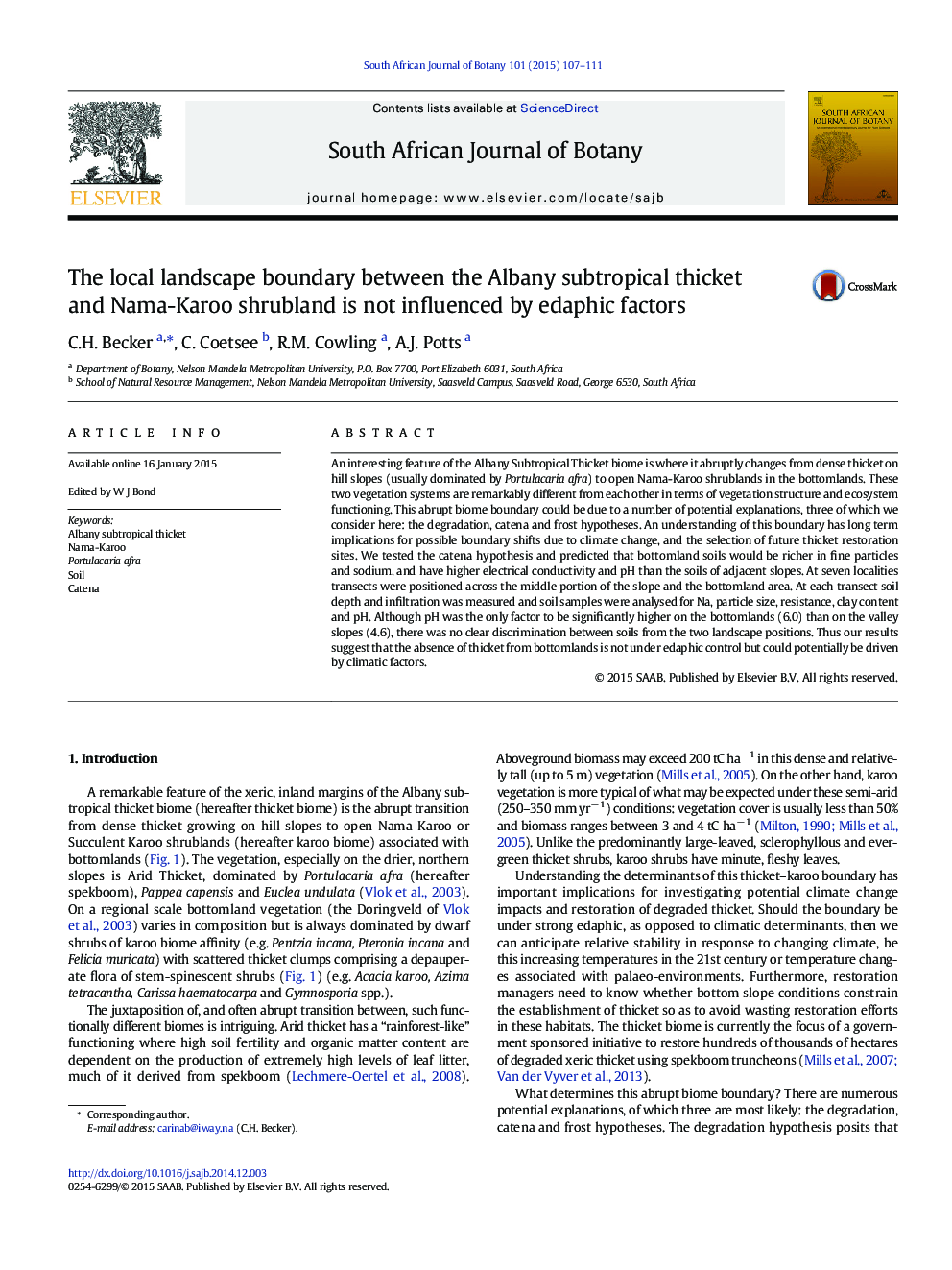| کد مقاله | کد نشریه | سال انتشار | مقاله انگلیسی | نسخه تمام متن |
|---|---|---|---|---|
| 4520414 | 1625157 | 2015 | 5 صفحه PDF | دانلود رایگان |
• The hypothesis that soil factors at various slope positions could influence the Thicket-Karoo boundary is explored.
• There was no clear discrimination between soils from the two landscape positions.
• The absence of thicket from bottomlands is not under edaphic control but is instead most likely driven by climatic factors.
An interesting feature of the Albany Subtropical Thicket biome is where it abruptly changes from dense thicket on hill slopes (usually dominated by Portulacaria afra) to open Nama-Karoo shrublands in the bottomlands. These two vegetation systems are remarkably different from each other in terms of vegetation structure and ecosystem functioning. This abrupt biome boundary could be due to a number of potential explanations, three of which we consider here: the degradation, catena and frost hypotheses. An understanding of this boundary has long term implications for possible boundary shifts due to climate change, and the selection of future thicket restoration sites. We tested the catena hypothesis and predicted that bottomland soils would be richer in fine particles and sodium, and have higher electrical conductivity and pH than the soils of adjacent slopes. At seven localities transects were positioned across the middle portion of the slope and the bottomland area. At each transect soil depth and infiltration was measured and soil samples were analysed for Na, particle size, resistance, clay content and pH. Although pH was the only factor to be significantly higher on the bottomlands (6.0) than on the valley slopes (4.6), there was no clear discrimination between soils from the two landscape positions. Thus our results suggest that the absence of thicket from bottomlands is not under edaphic control but could potentially be driven by climatic factors.
Journal: South African Journal of Botany - Volume 101, November 2015, Pages 107–111
